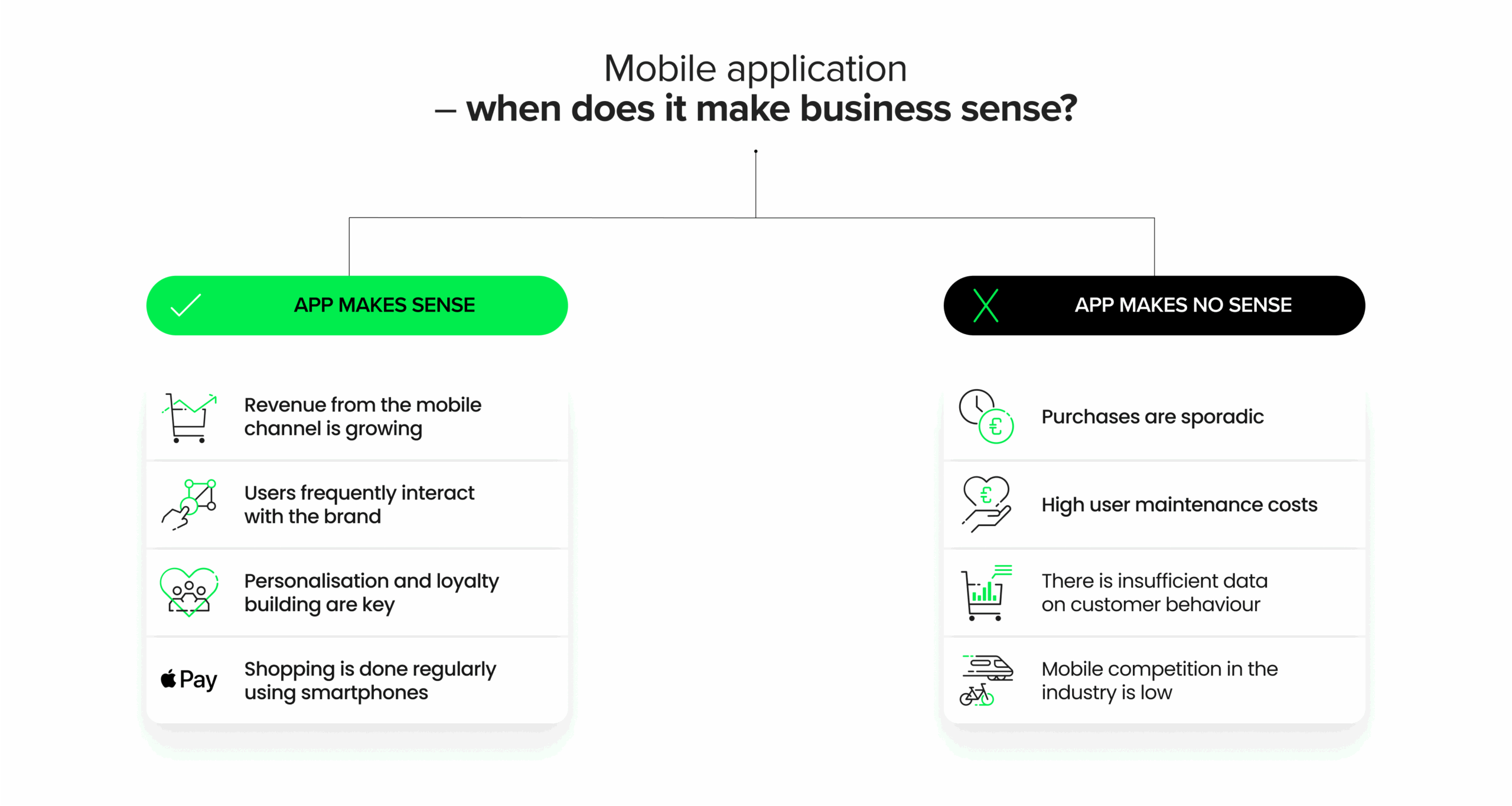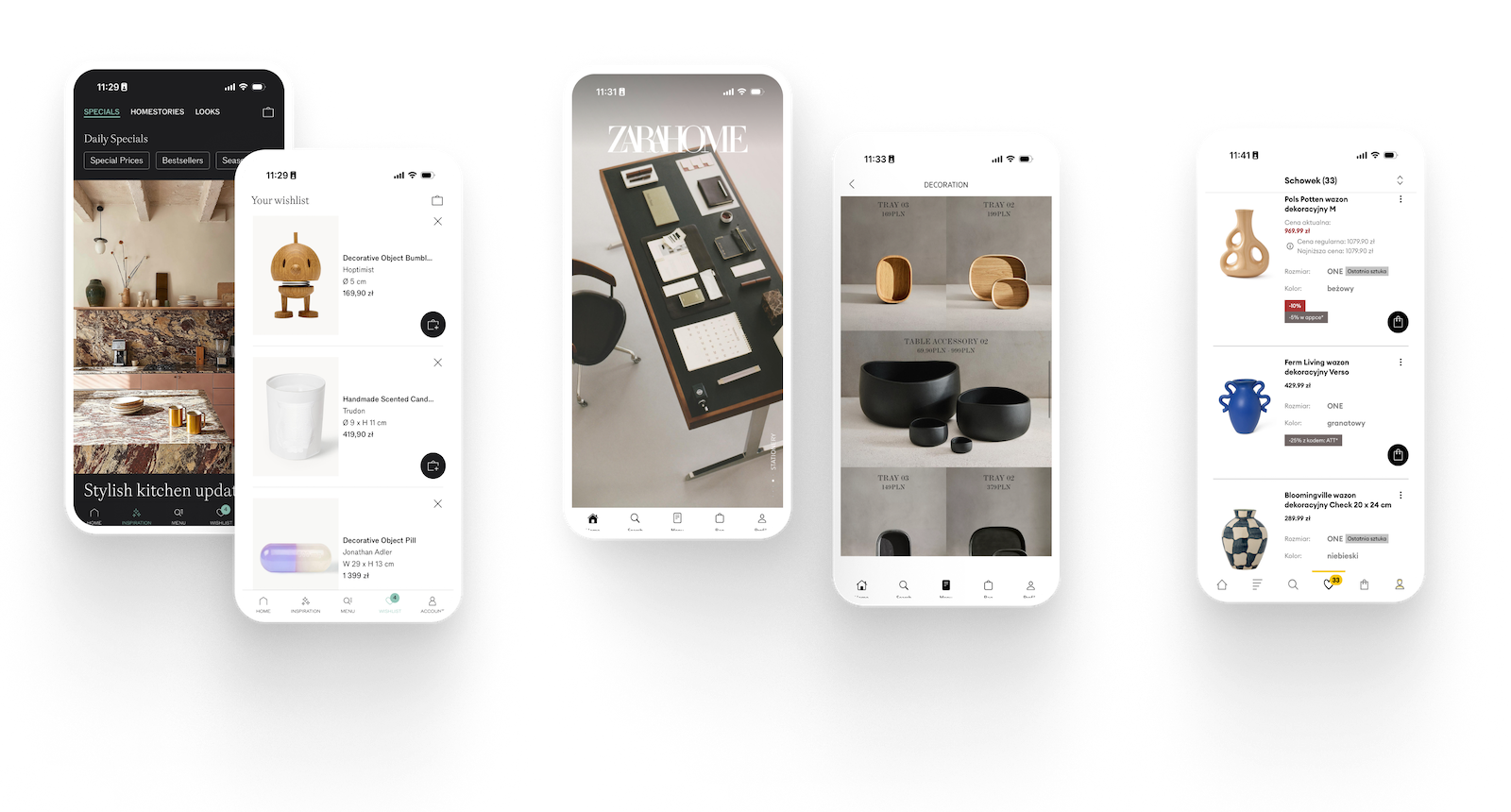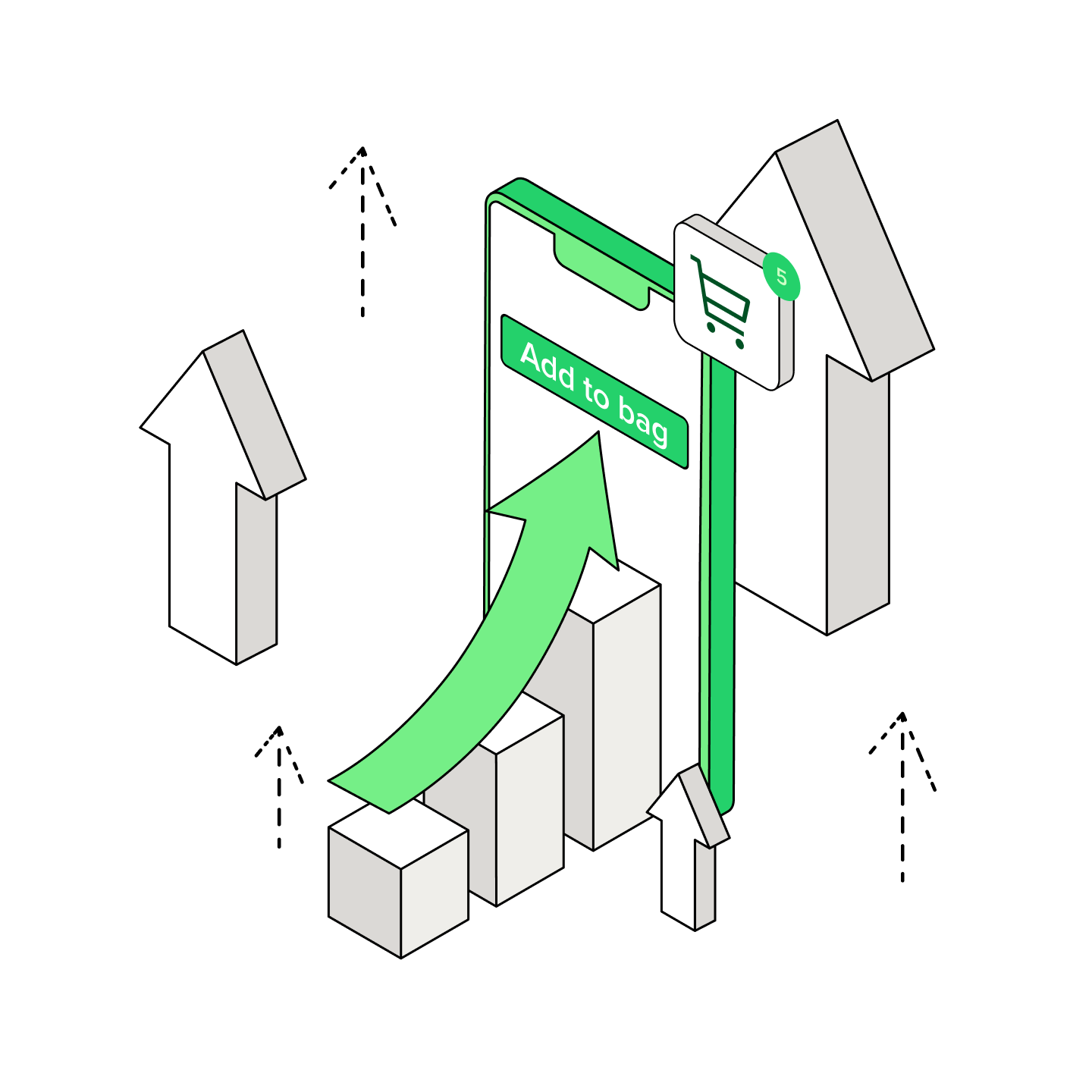Mobile commerce is growing at a pace that would have been considered unrealistic just a few years ago. Globally, over 70% of total e-commerce traffic already comes from mobile devices, and in some industries—such as fashion, beauty, and quick commerce—this figure exceeds 80%. We are seeing a very similar trend in Poland: consumers are increasingly choosing smartphones as their primary tool for online shopping, price comparison, and browsing offers.
These are not just numbers—they are a signal that users expect an immediate, convenient, and intuitive shopping experience. And they want to have it at their fingertips at all times.
In 2023, as much as 72% of global e-commerce sales took place via mobile devices. Forecasts indicate that by 2027, this share will increase to 88%.
Smartphones have become personal command centres. Customers browse offers on their way to work, order products between meetings, and make impulse purchases based on push notifications or social media campaigns. This is a fundamental change in the entire decision-making model – mobile users act faster, often plan less, but expect maximum simplicity and personalisation. What does this mean for businesses? It means that it is no longer enough to have a “mobile version of the website” – you need to consciously design the mobile experience as a separate, strategic sales channel.
Implementing a mobile application is not just a decision about a new interface. It is a moment when the entire organisation – and especially the IT department – must face questions about:
- system architecture and integration readiness,
- how to manage data and synchronise it in real time,
- transaction and user data security,
- optimising performance and user experience at the native level.
M-commerce is often a catalyst for broader digital transformation, which forces better API quality, a headless approach, CI/CD automation, and new competencies in the IT team. It’s not just a channel – it’s a new ecosystem that needs to be designed wisely and scalably.

Is a mobile app a must-have? A data-driven decision
In the e-commerce industry, the question is increasingly being asked: is a mobile app essential for every company, or only for the biggest players? The answer is: it depends – but the decision must be based on data, not intuition. Not every brand needs a native app, but every brand should have a well-thought-out mobile strategy.
A mobile application is not an end in itself — it should be a tool for increasing customer value. Here are some situations in which a native application makes business sense:
- If a large portion of revenue comes from the mobile channel (over 60–70%)
- If users return frequently and perform repetitive actions (e.g., orders, reservations, browsing offers)
- When loyalty, personalisation, and push communication are an important part of the strategy
- In the case of loyalty programmes, subscriptions or benefits available only in the application
If most users shop sporadically, the cost of acquiring and retaining an application user would be disproportionately high, the company is only testing its mobile presence or operates in a niche without much mobile competition, investing in applications may be an exaggerated decision.

How does the application support the omnichannel strategy and customer journey?
A mobile shopping app does not operate in a vacuum — its strength lies in its synergy with other sales and communication channels. Customers do not think in terms of “app” or “website” — for them, it is one coherent brand ecosystem. Therefore, the true value of a mobile app lies in its role in an omnichannel strategy.
A well-integrated app can become a key link in the customer’s shopping journey:
- It facilitates cross-channel shopping — customers can add a product to their basket on their desktop and complete the purchase in the app.
- It acts as a bridge between online and offline – e.g. it allows customers to scan products in a physical shop, check availability or collect their order via click & collect.
- It strengthens loyalty through dedicated features: exclusive offers, loyalty programmes, push notifications and personalised recommendations.
- It facilitates after-sales service, e.g. through access to order history, parcel tracking and quick contact with support.
As a result, the application not only converts, but also increases customer engagement and lifetime value (LTV). The key to the success of an omnichannel application is data consistency. Without it, the customer experience becomes chaotic. The most common points of synchronisation are:
- Stock status – updated in real time, regardless of the purchase channel (website, app, physical store).
- User account – one account, one login, one purchase and preference history, accessible everywhere.
- Personalisation – data from the application should feed recommendation engines and marketing automation campaigns in other channels.
- Price lists and promotions – consistency of offers and discounts at all points of contact with the customer.

What should you avoid in order not to hinder growth?
Lack of integration or poor integration can have the opposite effect to that intended:
- Inconsistent availability information – the customer sees the product as available in the app, but cannot buy it online or collect it offline.
- Duplicate user accounts – different data, no purchase history, no personalisation.
- Differences in prices and promotions – the customer feels confused or cheated.
- Slow synchronisation – changes to the order or status are not immediately visible in the app.
- Incorrect data from CRM or loyalty systems – resulting in inaccurate recommendations and a decline in trust.
Conclusion: integrating m-commerce with the rest of the digital environment cannot be an afterthought at the end of the project. It is a key element of the architecture that should be planned at the strategy stage.
Practical challenges of implementing a mobile application
Implementing a mobile application is one of the most complex technological projects in e-commerce – not only because of development issues, but also due to business and organisational risks. Even the best idea can end in failure if there is no coherent vision, well-planned architecture and appropriate technological partnership.
Cost analysis vs. potential return on investment (ROI)
Why even a good app can turn out to be a costly mistake without a strategy.
Investing in a mobile app is more than just a technological decision – it is a strategic step in the development of the entire sales channel. Although the potential of the app is enormous (increased conversion, loyalty, engagement), its success largely depends on two factors:
- A consciously chosen strategy
- Clearly defined business objectives and performance metrics (KPIs)
Objectives of implementing the mobile application
Without clearly defined goals and an action plan, a mobile application quickly becomes:
- an expensive tool without users (low retention),
- a source of frustration (because it does not meet customer or business expectations),
- a liability in the IT budget (because it needs to be maintained, but it is not clear why).
Infrastructure requirements: scalability, speed of operation, integration with the backend
M-commerce places higher technological demands than desktop e-commerce. Mobile customers do not wait – every second of delay means a drop in conversion. Therefore, the foundation is:
- Scalability: the infrastructure must be able to withstand peak loads, e.g. in push campaigns or holiday periods.
- Performance: the API must respond instantly and the UI must load immediately – preferably in less than 2 seconds.
- Backend integration: the application must work in full synchronisation with ERP, CRM, warehouse, payment and product management systems. This requires stable APIs and a well-designed system.
Regular optimisation of mobile sites is essential – failure to do so translates directly into poor UX, transaction errors and user frustration.

M-commerce is not a trend – it is a strategic decision
Implementing a mobile application is not a sprint, but a marathon. Without proper preparation – strategic, technological and organisational – even a well-designed application may fail to meet expectations.

The greatest risk is not technology, but rather a lack of a coherent vision, poor execution, and the separation of business from the manufacturing process
The mobile revolution in commerce is not a passing trend, but a lasting change that is redefining the entire e-commerce landscape. The growth in mobile traffic, changes in consumer behaviour and technological developments mean that the mobile channel is no longer an “option” – it is becoming a necessity for companies that want to build a competitive advantage and respond effectively to user expectations.
But mobility is not just a new interface. It is a transformation of the technological, organisational and business model. It encompasses everything from UX and system integration, through data security, to monetisation and performance measurement strategies. A mobile application can be a powerful tool, but only if its implementation is preceded by analysis, clearly defined goals and a coherent strategy.
Well-planned m-commerce is an investment, not an expense. And the decision to build a mobile application should not be driven by market pressure, but by the real needs of users and business potential. Where technology meets data and strategy, solutions are created that truly deliver value – for both customers and organisations.
Data sources
Author
Małgorzata Dolińska-Amrozik
Product Designer / Product Solution Master
She designs solutions that combine business goals with the real needs of users. At SYZYGY, she co-created mobile applications for the Lufthansa Group, using customer behaviour data to plan product improvements. She focuses on an agile approach, workshop-based collaboration and bold design decisions that support business development in the area of m-commerce.
Read more:
Mobile applications: native, hybrid or web-based? – A UX guide for IT decision-makers


Are you wondering which application technology best suits your business needs?
Want to learn more about the advantages of native, hybrid, or web applications? Contact us. We will help you choose the technology best suited to your needs – from creating a mobile application, through optimising the user experience, to effective implementation on various platforms.




